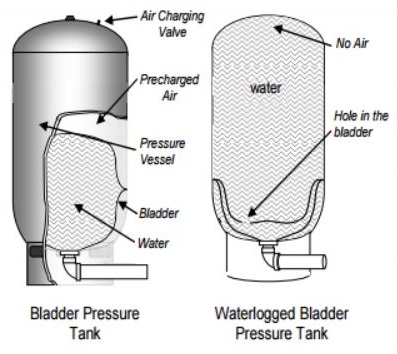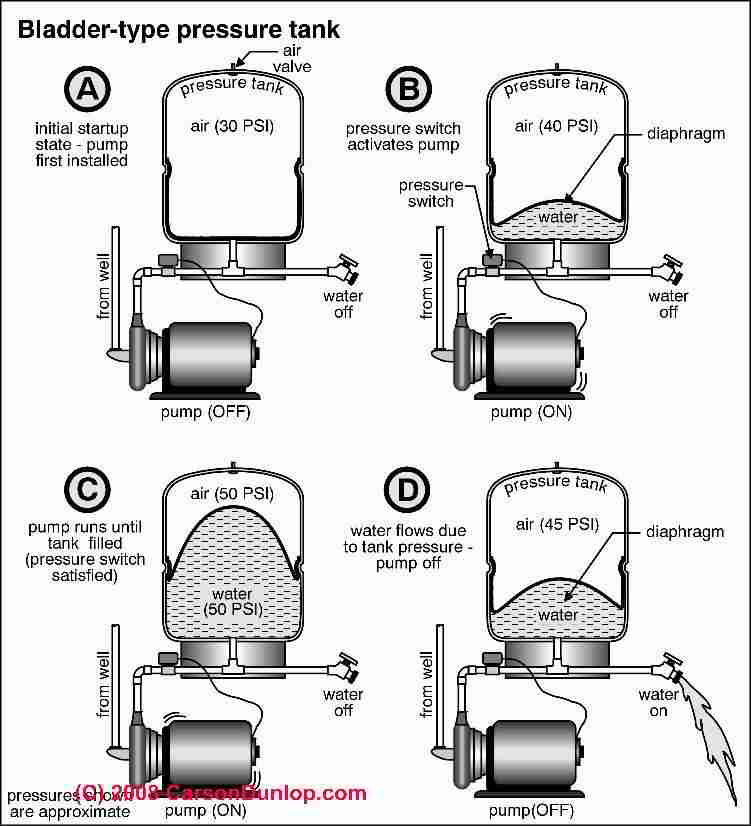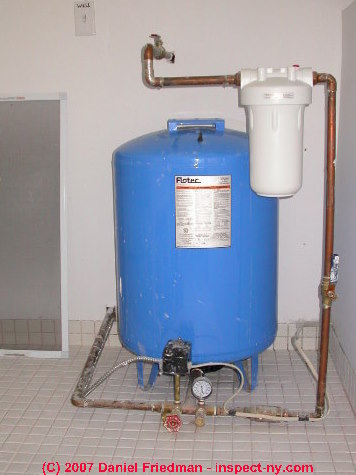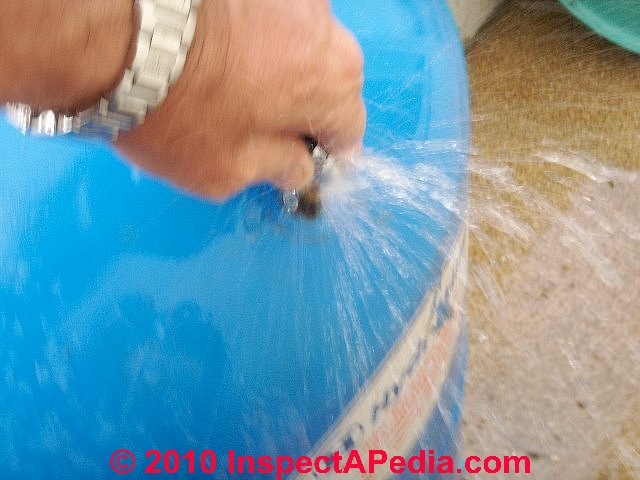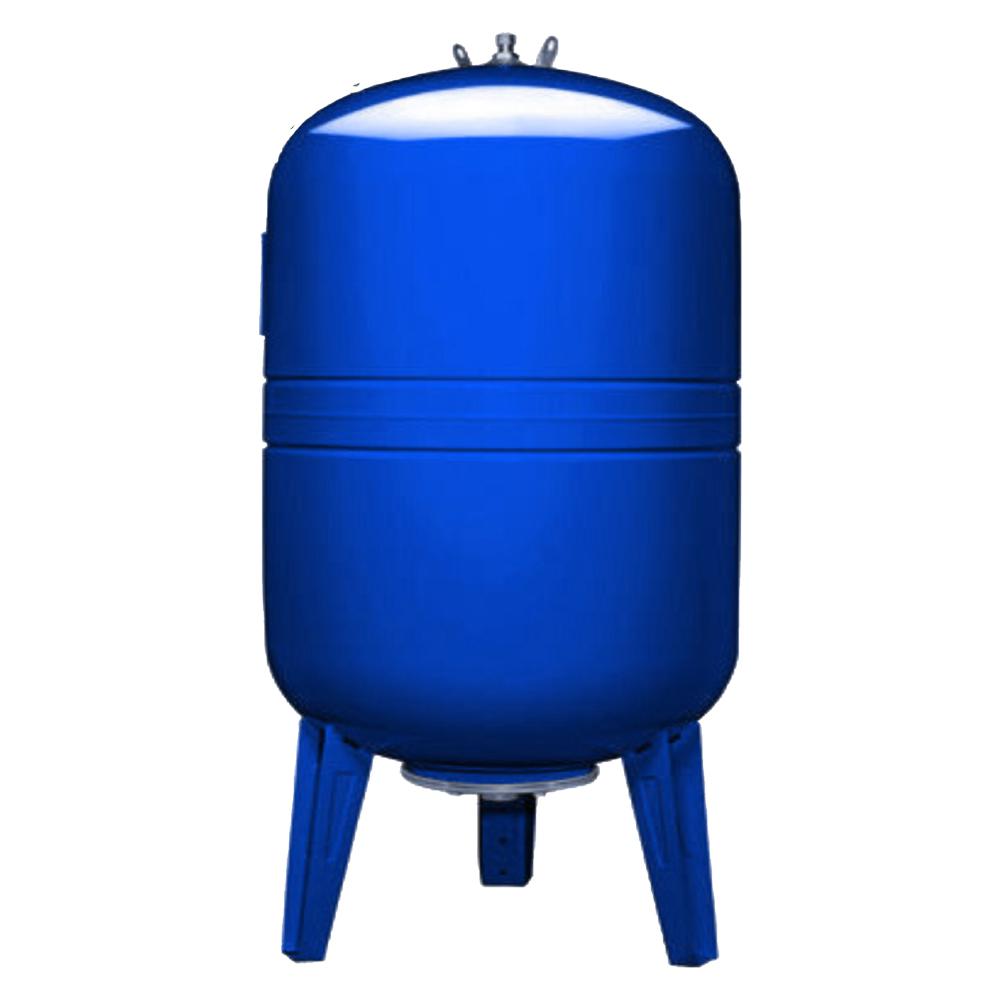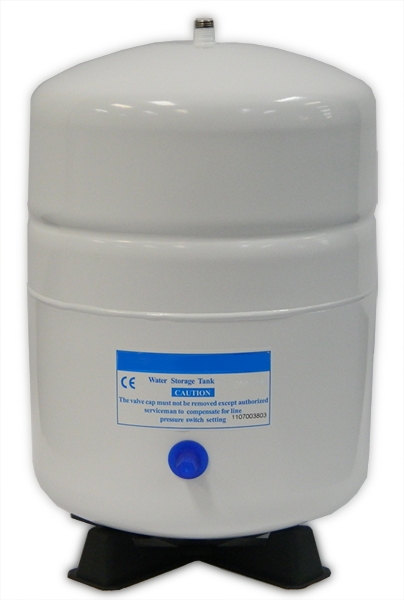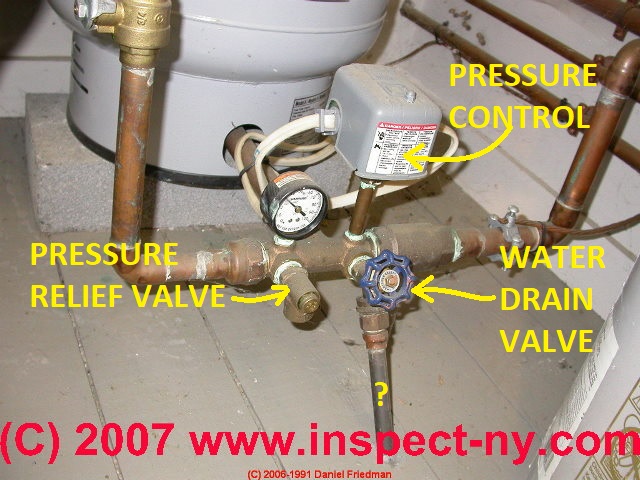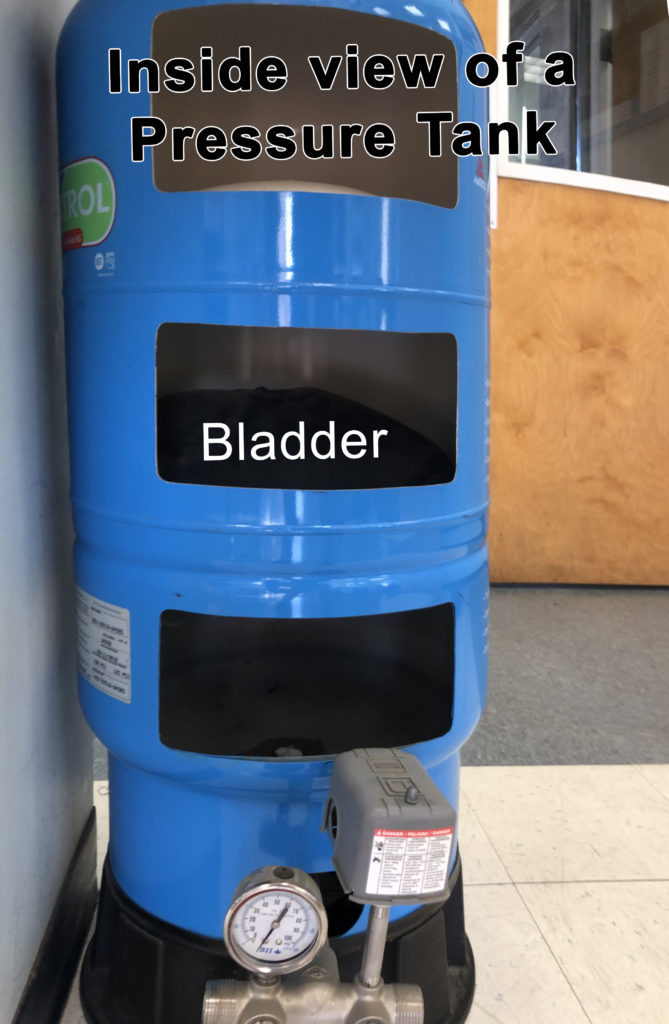Bladder Pressure Tank Maintenance

Scrub the calcium deposits off the pressure tank and pipes.
Bladder pressure tank maintenance. If you can not remove some of the build ups use a piece of steel wool. If the pressure is low check the bladder for leaks. Location of the system. Check pressure in the tank with your pressure gauge.
Shut down the power to your pumping system. Open a faucet somewhere until the water stops running. Air up the captive air tank to the proper level and let it sit for at least 15 minutes. Most tanks can be wiggled back and forth.
Drain the tank by opening the closest faucet. Even if the tank air pressure is too low you should still see some air pressure at the tank air valve when all water has left the tank. This ensures that there s no water left in the tank. In a bladder type water tank with proper pressure adjustment when all water has left the tank you ll see air pressure at 2 psi below the pressure switch cut in setting.
Disconnect electrical power to the pump. Add air if the pressure is more than 2 psi below the pump cut in pressure. You can test the bladder pressure by unscrewing the valve cap and using the same pressure tester you use to test the air in your tires. The process of checking the tank begins with isolating the vessel from the system.
Check the tank s pressure by placing an air pressure gauge on the air charging valve on the top of the tank. Wipe out the inside of the well pressure tank with a rag. Turn on the faucet until the water stops. If the pressure has fallen you can use a conventional compressor a tire inflator or a manual pump to add more air.
If the pressure has dropped at all with the system completely depressurized the bladder or diaphragm is leaking and the tank needs to be replaced. If you find that water is leaking from the valve you may have a ruptured bladder and the tank will need to be replaced. Step 7 replace air regulator. If it appears that a bladder tank is not operating correctly check the tank s air charge.
At the end of that time simply take another reading of the air pressure. Inspection and maintenance bladder tanks it is recommended by n f p a. Check this by following the below given instructions. Remove protective air valve cap.
Use caution when using an air compressor or air pump. However certain requirements can affect the frequency of inspection. Yearly preventative maintenance should be completed to ensure your bladder or diaphragm tank is holding its pre charge and thereby providing necessary system protection. Before you attempt to balance your pressure tank make sure that the tank bladder is not burst.
Step 6 replace access hatch. Set the access hatchback onto the well pressure tank and tighten it down with the screws. Check the bladder for leaks by depressurizing the water system. Local authority insurance company requirements.
That fixed bladder tank foam fire protection systems be maintained and inspected on at least a semiannual basis.




